Reception Lighting Techniques Every Luxury Wedding Photographer Uses
- gillianerea
- Aug 28
- 5 min read
Updated: Oct 8
Discover the four most common wedding reception lighting techniques—from ambient to artistic flash—that luxury wedding photographers use worldwide. Learn the pros, cons, and how each style can enhance your evening celebration.
You’ve heard it said before: every wedding is completely unique. And that’s true! That said, there are certain photography techniques you may not know how to put into words—but you likely already know whether you love them or don’t prefer them, especially when it comes to reception lighting (once the sun goes down). Today, I’m going to break down four of the most common reception lighting techniques you’ll see in wedding photography and give you the language to describe what feels most you.
Now, a quick disclaimer: I personally like to experiment with flash throughout the wedding day when it feels necessary, but I use it thoughtfully and sparingly. In those moments, I’m working with flash as a “fill light”—meaning it’s not there to overpower the natural mood of the space, but to balance shadows, bring clarity, and highlight what’s already happening in the room. This "fill light" is kind of a similar technique as the indirect, or bounced flash!
Keep in mind, you don’t have to pick just one reception lighting style when working with me! As a luxury wedding photographer, I can mix and match ambient, bounced, direct, and artistic flash techniques to perfectly capture each moment, depending on your evening’s events and priorities.
Ambient Lighting - No Flash
This technique is completely dependent on the lighting of the room (i.e. twinkle lights, house lights, street lamps, dimmed canned lighting, DJ provided lighting, etc.)
There are no wrong answers when choosing your preferred style of night photography, but it's important to be well informed on the pro's and cons of each!
Pros of Ambient Lighting at a Wedding Reception
Creates a warm, natural and authentic atmosphere that feels true to the eye.
Produces soft, flattering light on skin tones, making guests and couples look their best in a candid, documentary-style way.
If you have extra lighting provided from the DJ or Videographer, this can add a great "boost" of light to the subject! It's not "needed" for photo, but can achieve a specific look as I shoot in ambient mode.
Cons of Ambient Lighting at a Wedding Reception
In very low-light reception environments, images can appear grainy or noisy (let’s chat about what “too dark” really looks like for your venue).
Limited light can cause a loss of color vibrancy and fine detail... though this may not be a drawback if you prefer that moody, golden-toned look.
Works best for still or slow-moving subjects; fast-moving reception moments (like dancing) may blur because of the slower shutter speeds needed to let in enough light.
Indirect or Bounced Flash - Only Available Indoors / With Ceiling
This technique uses the ceiling, or in some cases, a faux ceiling (i.e. long white curtains hung horizontally) as a light reflector. Instead of the flash coming directly onto the subject, it shoots up, hits the ceiling, and bounces the diffused light back down onto your reception space.
Pros of Bounced (Indirect) Flash at a Wedding Reception
Creates a natural and true-to-life look by spreading light evenly throughout the room.
Produces soft, flattering light on skin tones, similar to natural light but with more consistency indoors.
Restores color accuracy and fine detail that may be lost in low-light reception settings.
Allows for sharper images and the ability to freeze movement, making it ideal for capturing dancing and lively reception moments.
Cons of Bounced (Indirect) Flash at a Wedding Reception
Can only be used if the venue’s structure allows, as it requires ceilings that are low enough, and surfaces that are light enough so that they can reflect light back effectively.
Every luxury wedding photographer has their favorite tools, but these reception lighting techniques are the ones used most often to create dynamic, timeless images.
Direct Flash
This technique grew in popularity in luxury weddings in 2020-2023, and I personally love mixing this with a vintage, purposeful grain effect. My clients who have requested this have been looking for a cleaner look, but I think there are a lot of ways to get creative with this!
Pros of Direct Flash at a Wedding Reception
Perfect for freezing fast movement and high-energy moments on the dance floor.
Creates a bold, dynamic look with crisp highlights and dramatic shadows.
Preserves vibrant colors and sharp details, giving photos a striking, editorial-style feel.
Cons of Direct Flash at a Wedding Reception
It’s a very distinctive style—you either love it or don’t! From a technical standpoint, direct flash is highly effective for photographers, but stylistically, it may not match every couple’s vision.
Artistic Flash
This technique is the newest addition to my services! With "Artistic Flash", I'm able to add a feeling of warmth and a whole new element of action to the image. This makes every single image totally unique. While I use the other lights in the room to create a swiped effect, the image can totally vary depending on what KIND of lights you provide in the reception. See if you can spot what are regular LED lights, outside "Christmas" string lights, DJ lights, a single canned light, or something else...
Pros of Artistic (Long Exposure) Flash at a Wedding Reception
Captures fast-moving subjects while creating a motion-blur effect, capturing both the energy and movement in a single frame.
Adds dynamic energy and excitement to the reception scene, making the photos feel alive and messy! (Just like the night, if we're being honest...)
Produces bold, high-contrast images with bright highlights and deep shadows.
Maintains color richness and fine detail, even while creatively playing with light and motion.
Cons of Artistic (Long Exposure) Flash at a Wedding Reception
This style is an acquired taste! Either you love the effect or prefer something more traditional (but there are no right or wrong answers!)
The beauty lies in its intentional imperfection: inspired by vintage flash film photography, some faces or details may be partially obscured by light trails or “light leaks,” which is part of the artistic look.
We can definitely customize this type of blur effect to an extent -- letting less or more blurring occur to your liking.
If you're not sure what kind of lights you'll need to recreate one of these scenes (or another not pictured), OR you're wondering if your venue will work for the style of photography you like, shoot me a message! Gillian.E.Rea@gmail.com

You're more than a one-dimensional human being, and I believe your photo experience and final gallery should reflect that!
Our collaboration, sharing mood boards, inspiration photos, and finding a shared language to describe what you like is what makes your photos feel like they have your own fingerprint on them!
Every couple deserves wedding photography that reflects their story, and that balance documentary-style storytelling, editorial artistry, and the timeless quality of film.













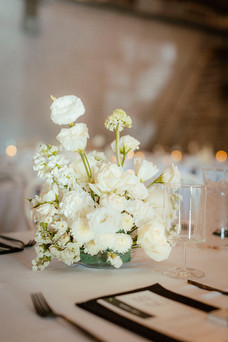






























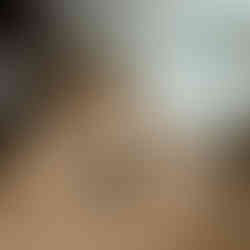


















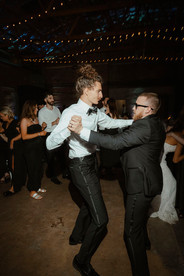










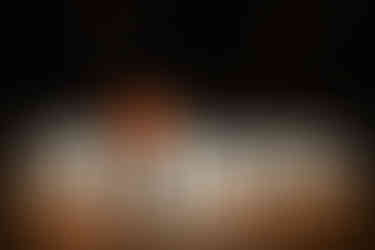

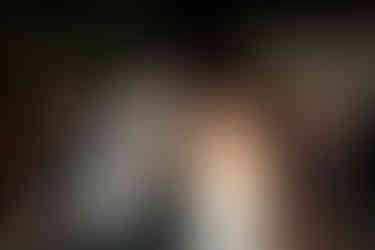























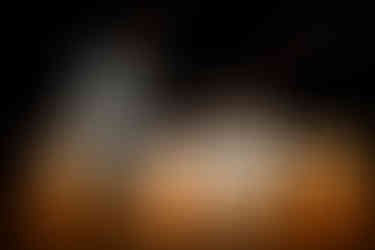

























Comments